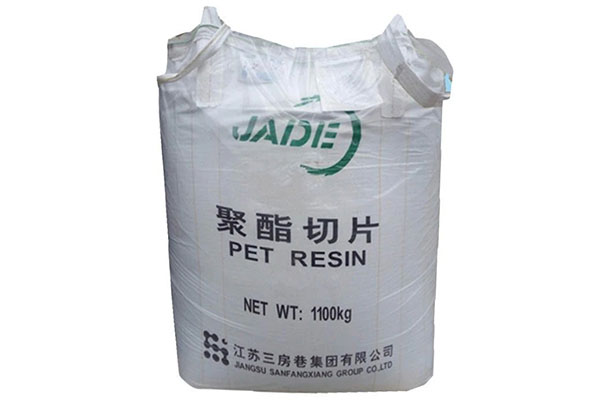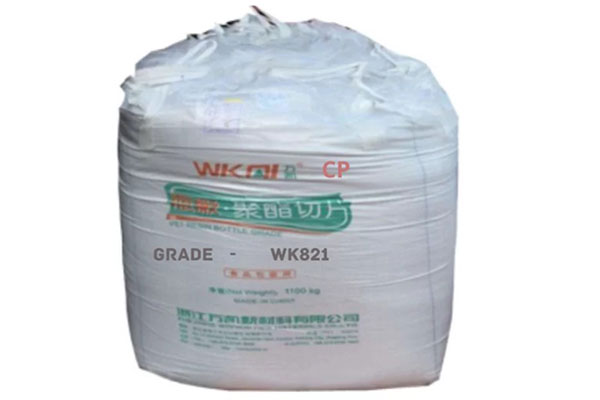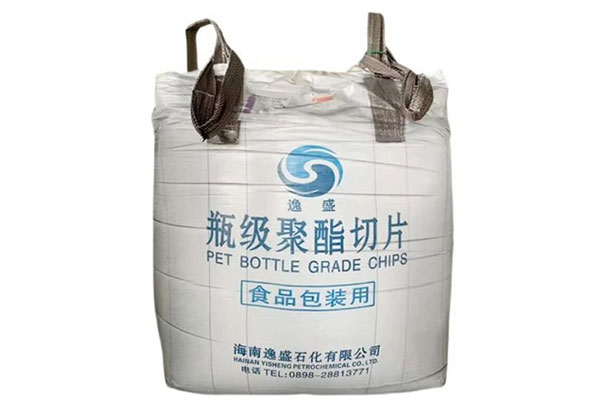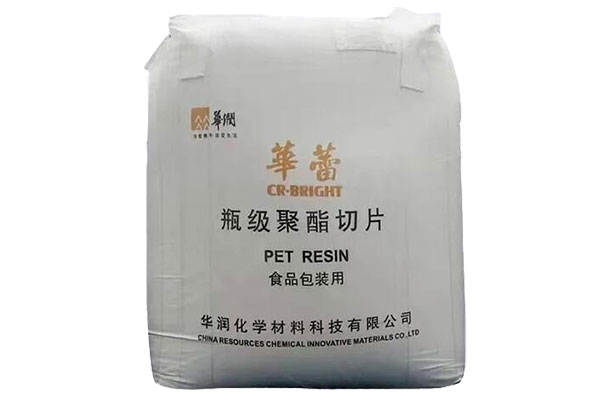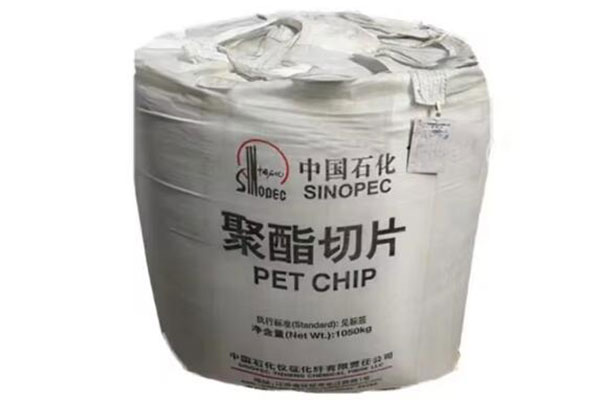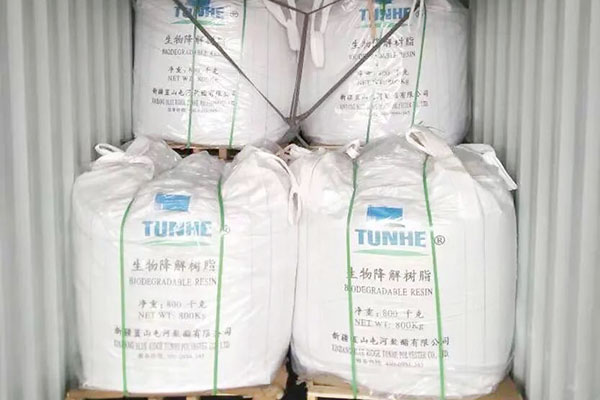Home » PET Resin
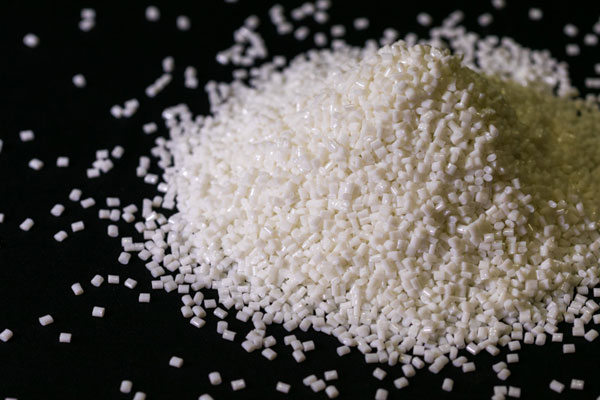
PET Resin for Sale
- CAS NO.: 25038-59-9
- HS Code: 390769
- MF: H(OCH2CH2OCOC6H4CO)nOCH2CH2OH
- Main Grade: Bottle Grade PET Rsin & Textile Grade PET Resin
- Appearance: Granules
If you are looking for polyester resin in bulk for your industry, we will be your ideal choice. As a leading supplier and exporter of plastic raw materials from China for more than twenty years, we focus on world popular brands and also China origin polymers. No matter what kind of PET resin you are looking for, feel free to contact us for more now. PET
Well-known PET Resin Manufacturers in China
Would like The Quotation?
Leave your demands in detail here(including the model, package, brand, quantity), we will reply you quickly.
Hot Sale PET Resin Bottle Grades in Our Company
| Grades | Models | Brands | IV Value (dl/g) |
| Water Bottle Grade | CZ-302 | JADE | 0.80±0.02 |
| CZ-302L | JADE | 0.76±0.02 | |
| WK-801 | Wankai | 0.80±0.015 | |
| YS-W01 | Yisheng | 0.80±0.015 | |
| BG80 | Yizheng | 0.80±0.02 | |
| CR-8816 | China Resources | 0.806 | |
| CR-8816L | China Resources | 0.76±0.02 | |
| TH102 | Tunhe | 0.800±0.015 | |
| Oil Bottle Grade | CZ-318 | JADE | 0.850±0.02 |
| WK-821 | Wankai | 0.83±0.015 | |
| YS-Y01 | Yisheng | 0.83±0.015 | |
| BG802 | Yizheng | 0.83±0.02 | |
| TH102C | Tunhe | 0.840±0.015 | |
| Hot Filling Bottle Grade | CZ-333 | JADE | 0.850±0.02 |
| WK-811 | Wankai | 0.79±0.015 | |
| WK-811L | Wankai | 0.76±0.015 | |
| YS-H01 | Yisheng | 0.78±0.015 | |
| CR-8839 | China Resources | 0.80±0.02 | |
| BG801 | Yizheng | 0.80±0.02 | |
| TH105 | Tunhe | 0.750±0.015 | |
| CSD Bottle Grade | CZ-328 | JADE | 0.850 ± 0.02 |
| CZ-328A | JADE | 0.850 ± 0.02 | |
| WK-851 | Wankai | 0.88± 0.015 | |
| WK-881 | Wankai | 0.87± 0.015 | |
| YS-C01 | Yisheng | 0.875±0.015 | |
| CR-8828 | China Resources | 0.850 ± 0.02 | |
| BG85 | Yizheng | 0.875±0.015 | |
| BG85H | Yizheng | 0.875±0.015 | |
| TH104 | Tunhe | 0.870±0.015 |
Would Like The Quotation
Leave more about your requirements, such as, brands, models, quantity, package, country, etc.
PET Resin Fiber Grade Specifications
| Luster | Intrinsic Viscosity (dl/g) | Color L Value | Color B Value | Melting Point ℃ | DEG % | Tio2 Content % |
| Super Bright(SB) | 0.640 ± 0.020 | 53.0 ± 3.0 | 1.5 ± 1.5 | 251.0 ± 2.0 | 1.45 ± 0.2 | —— |
| Semi Dull (SD) | 0.640 ± 0.010 | 75.0 ± 2.0 | 1.3 ± 1.0 | 257.0 ± 2.0 | 1.36 ± 0.10 | 0.33 ± 0.05 |
| Cationic Dyeable(CD) | 0.520 ± 0.020 | 64.0 ± 3.0 | 2.8 ± 2.0 | 242.0 ± 3.0 | 3.50 ± 0.50 | 0.10 ± 0.05 |
| Flame Retardant(FR) | 0.690 ± 0.020 | 62.5 ± 4 | 4.2 ± 3.0 | 238.5 ± 3.0 | 3.30 ± 0.70 | 0.60 ± 0.10 |
Would Like The Quotation
Leave more about your requirements, such as, brands, models, quantity, package, country, etc.
Introduction of Polyester Resin
Polyester resin, also known as polyethylene terephthalate resin, are semi-crystalline or amorphous granules derived from purified terephthalic acid (PTA) and monoethylene glycol (MEG). These resins serve as the primary raw material for manufacturing polyester fibers, films, and plastic bottles.
Due to their excellent mechanical strength, chemical resistance, and recyclability, polyester resins are widely used in textiles, packaging, and industrial applications. The global demand for PET resin continues to grow, driven by the packaging industry’s shift toward sustainable materials and the textile sector’s need for high-performance fibers.
Key Properties of PET Resins
Physical Properties
High Tensile Strength: PET chips provide strong and durable fibers.
Thermal Stability: They can withstand temperatures up to 150°C (short-term) and 70-100°C (long-term).
Low Moisture Absorption: PET absorbs only 0.4-0.6% moisture, making it ideal for packaging.
Transparency & Gloss: Used in clear plastic bottles and films.
Chemical Properties
Resistant to Acids & Solvents: Polyethylene terephthalate is unaffected by weak acids and organic solvents.
Hydrolysis Resistance: Degrades slowly in high-temperature water or alkaline conditions.
Recyclability: Polyester resin can be mechanically or chemically recycled, reducing environmental impact.
Mechanical Properties
High Modulus: Stiffness makes it suitable for engineering plastics.
Good Abrasion Resistance: Used in tire cords and industrial fabrics.
Classification of Polyester Resins
Classification by intrinsic viscosity (IV value)
Low viscosity PET (IV 0.40-0.65dL/g)
Main uses: short fiber production, spunbond non-woven fabrics, engineering plastic modified base materials.
Performance characteristics: good melt fluidity, low processing temperature, moderate crystallization rate.
Medium viscosity PET (IV 0.65-0.80dL/g)
Main uses: PET for bottles, BOPET film, industrial filament.
Performance characteristics: excellent mechanical strength, good thermal stability, wide processing window.
High viscosity PET (IV>0.80dL/g)
Main uses: tire cord, industrial conveyor belt, high-end engineering plastics.
Performance characteristics: ultra-high strength, good fatigue resistance, and high processing difficulty.
Classification by application field
Fiber-grade PET
Specification requirements: ash content <0.05%, agglomerated particles <5/mg, melting point 255±5℃.
Bottle-grade PET
Key indicators: acetaldehyde content <3ppm, haze <1.5%, good thermal stability.
Bottle-grade PET can be divided into: carbonated beverage bottle level, mineral water bottle level, edible oil bottle level.
Film-grade PET
Performance requirements: surface roughness Ra <0.1μm, light transmittance >88%, thermal shrinkage <1.5%.
Classification by product form
Glossy PET slices
Features: low crystallinity, high transparency, suitable for transparent products.
Semi-matte PET slices
Features: Add about 0.3% TiO2, moderate gloss, strongest versatility.
Full matte PET slices
Features: TiO2 content >1.0%, completely matte.
Main Applications of Polyester Resin
Packaging industry application (accounting for more than 55% of total PET consumption)
Food and beverage packaging
Beverage bottles:
PET resin are injection molded into bottle embryos and then blown into bottles for mineral water, carbonated beverages, juices, tea drinks, etc. Its advantages include high transparency, light weight, impact resistance, good barrier properties, and can prevent CO₂ loss.
Edible oil bottles:
Good oil resistance, high chemical stability, and not easy to react with oils.
Food containers:
Like microwave lunch boxes, salad bowls, etc. Some use high-temperature resistant PET or modified PET.
Daily chemical and pharmaceutical packaging
Cosmetic bottles:
Used for packaging of shampoo, shower gel, etc. Colorful appearance can be achieved by adding masterbatch.
Pharmaceutical packaging:
Tablet blisters, medicine bottles, etc. The PET resin must meet medical-grade hygiene standards.
Film and composite packaging
BOPET film:
Biaxially oriented PET film is used for food packaging (such as snack bags, vacuum packaging), electronic product protective film, etc. It usually has the characteristics of high strength, temperature resistance, oxygen/water vapor barrier, etc.
Composite packaging materials:
Compounded with aluminum foil, PE and used for coffee bags, milk powder packaging to extend the shelf life.
Other special applications
Transparent hard boxes:
Electronic product display boxes and gift boxes, taking advantage of the transparency and processability of PET.
High temperature resistant packaging:
Through blending or coating technology to improve heat resistance, used for hot-filled beverages (such as tea drinks).
Applications in the textile industry
Conventional fiber applications
(1) Staple fiber
Clothing fabrics:
Pure polyester or blended with cotton, linen. Used to make shirts, jackets, sportswear, etc., It is with the characteristics of wrinkle resistance, wear resistance, easy washing and quick drying.
Cotton-like polyester: Through modification to achieve softness and moisture absorption, it can replace some cotton fabrics.
Home textile products:
Bedding (such as quilt fillings), curtains, sofa covers, etc., taking advantage of its fluffiness and durability.
(2) Filament
FDY (fully drawn yarn):
Used for smooth fabrics (such as lining, women’s clothing), imitation silk fabrics.
DTY (low-stretch yarn):
It has elasticity and is used for knitted clothing (T-shirts, sweatpants), socks, etc.
POY (pre-oriented yarn):
It needs to be further processed into DTY or FDY and is an intermediate product for filament production.
Functional fibers
Special properties are given to polyester resins by modification or addition of additives:
Moisture wicking fibers:
Surface microporous structure, used for sportswear and outdoor clothing.
Flame retardant fibers:
Add flame retardants and are used for firefighting uniforms and home decoration fabrics (such as curtains).
Antibacterial fibers:
Embedded with antibacterial materials such as silver ions, used for medical textiles and underwear.
Ultraviolet (UV) resistant fibers:
Used for sun protection clothing and outdoor tents.
Industrial textiles
Nonwoven fabrics:
Medical supplies, sanitary materials, filter materials.
Spunbond/meltblown: Polyester chips are directly webbed, efficient and low-cost.
Industrial fabrics:
Tire cord (high-strength PET), conveyor belts, tarpaulins, which require high strength and corrosion resistance.
Recycled environmentally friendly fibers
Recycled polyester (rPET):
Made from recycled PET bottle flakes. It can be used for environmentally friendly clothing and shoes.
Degradable polyester fiber:
Polylactic acid PLA blended fiber under development to reduce environmental burden.
Differentiation and high-end applications
Ultrafine denier fiber:
Monofilament fineness <0.3 denier, used for suede and high-end sports fabrics.
Special-section fiber:
Triangular, hollow and other cross-section designs to enhance gloss, warmth or breathability.
Smart fiber:
Embedded with conductive materials, used for wearable devices and heating clothing.
Insulation and packaging materials
(1) Electronic component packaging
Capacitor film:
PET film is used to manufacture film capacitors. Due to its high dielectric strength and low dielectric loss, it is widely used in circuit boards and power modules.
Transformer insulation layer:
High-temperature resistant PET film wraps copper wire to prevent short circuits.
(2) Integrated circuits and semiconductors
Chip carrier tape:
PET film is made into carrier tape to protect electronic components during SMT patching.
Flexible printed circuit board (FPC) substrate:
Modified PET is used as an insulating base film to partially replace polyimide to reduce costs.
Structural parts and housings
(1) Electrical housings
Socket/switch panel:
Flame-retardant PET resin meets the UL94 V0 standard and is used for charger housings and junction boxes.
Small electronic device housings:
Like routers and smart home devices, they take advantages of the lightweight and easy processing properties of PET.
Functional films and coatings
(1) Display devices
Liquid crystal display (LCD) backlight film:
PET film is used as a diffusion film and a brightness enhancement film.
Touch screen protective layer:
Hardened PET film is used as a temporary protective film for mobile phones, balancing light transmittance and scratch resistance.
(2) Conductive and shielding materials
ITO film substrate:
PET is plated with indium tin oxide to make a transparent conductive film, which is used for touch screen sensors.
Electromagnetic shielding film:
Surface metallized PET film is used for flexible circuit anti-interference.
Cable and connection system
Cable insulation layer:
PET film is wrapped or extruded to coat copper wire, which is voltage-resistant and heat-resistant.
Optical fiber secondary coating:
Modified PET protects optical fiber from stretching and bending.
New energy and energy storage applications
Lithium battery components:
Separator coating: PET nanofiber film improves the high temperature resistance of lithium battery separator.
Electrode packaging: PET layer in aluminum-plastic film.
Solar back panel:
Weather-resistant PET film is used as the middle layer to protect photovoltaic modules.
FAQs About PET Resin
1. What are the advantages of PET plastic materialcompared to other polymers like PP, PE, PVC?
PET resin offers significant advantages, especially in the bottle packaging. PET plastic material offers superior clarity, lightweight strength, impact resistance, and gas barrier properties. It is also highly recyclable and suitable for direct food contact, making it ideal for modern packaging solutions.
2. Is PET resin safe for food and beverage packaging?
Yes. Virgin PET resin is approved by global regulatory agencies such as the FDA and EFSA for direct food contact. It does not release harmful substances under normal processing and use conditions.
3. Can PET resin be recycled?
Absolutely. PET plastic material is one of the most widely recycled plastics in the world. Recycled PET (rPET) can be reused to produce bottles, sheets, or fibers, reducing environmental impact and promoting a circular economy.
4. What key indicators need to be considered when selecting PET plastic material?
Intrinsic viscosity: Directly affects the molecular chain length and the mechanical strength of the final product.
Acetaldehyde content: Excessive acetaldehyde content can affect the taste and quality of beverages.
Melting point: Determines the temperature range for processing and molding.
Color value: Includes L value, b value, etc., affecting the appearance and transparency of the final product.
Carboxyl content: Reflects the degree of thermal degradation of the material during processing, affecting its thermal stability.
Whether it contains binders: For high-barrier packaging requiring multi-layer co-extrusion processes, chips containing binders are selected.
5. What is the difference between virgin PET resin and recycled PET resin (rPET)?
Virgin PET resin is produced from petrochemical feedstocks and offers the highest purity and performance. Recycled PET resin is made from post-consumer bottles or waste PET and is an eco-friendly alternative often blended with virgin resin.
6. Where can I find Reliable PET resin manufacturers or suppliers?
There are many well-known PET resin manufacturer in China, like JADE, Wankai, China Resources, Yisheng, Yizheng, Tunhe, etc. However, these manufacturers typically sell their goods to agents, who then distribute them. You can search on Google, Alibaba, Made in China, and other platforms. Our company, as a PET resin distributor with over ten years of experience in exporting, can guarantee ample supply, highly competitive prices, and fast shipping, making us a trustworthy choice.
- Email: sales@chemategroup.com
- Tel: 0086-371-60921621
- Whatsapp: +86 18624832876
- Wechat: +86 18624832876
- ADD: NO.80 PUHUI ROAD,ZHENGZHOU CITY, HENAN PROVINCE, CHINA

